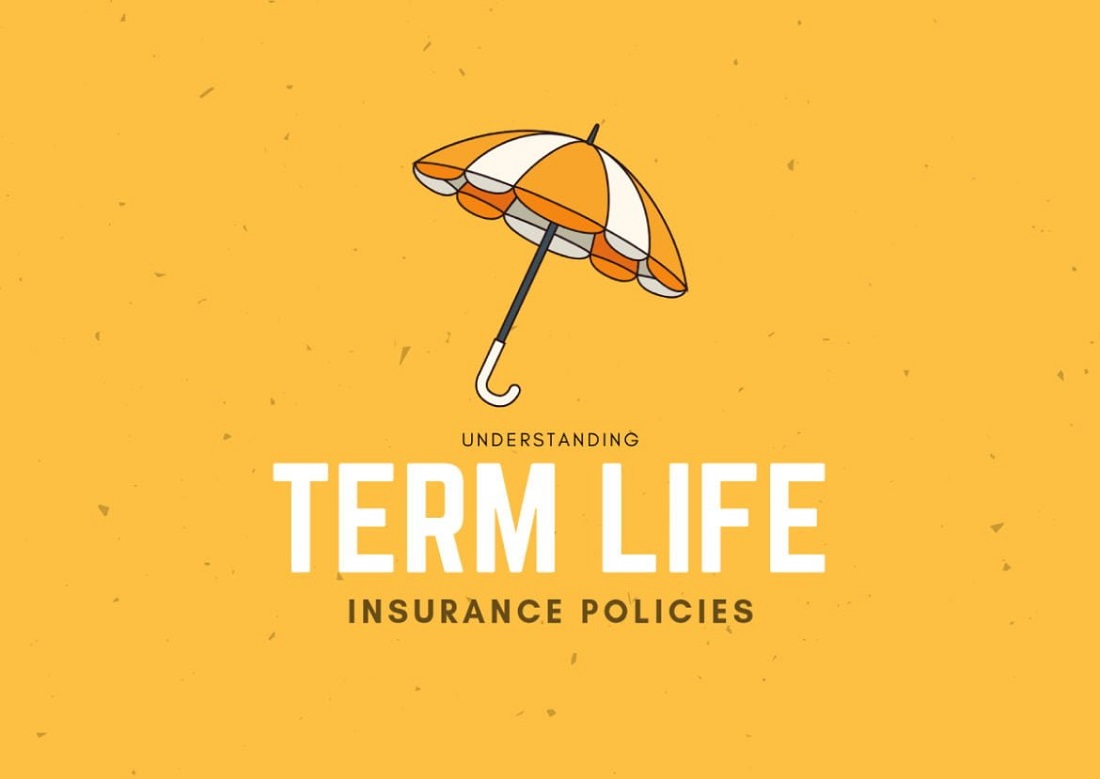From 8.8% to 3.5%, where is the life insurance road under the spread of low-interest rates?
Twenty years ago, the life insurance policy with a predetermined interest rate of 8.8% entered its final carnival, and then the central bank lowered the benchmark interest rate eight times in a row. For the first time, China’s life insurance industry saw the power of “spread loss”.
Twenty years later, the world has ushered in the era of low-interest rates. Recently, the European Central Bank announced that it will cut the deposit rate by 10 basis points to -0.5%. Previously, the central banks of Sweden, the eurozone, Switzerland, Japan, and other countries have all exceeded the lower limit of zero interest rates. Bank for International SettlementsThe quarterly review report released by (BIS) shows that government bonds with negative interest rates have exceeded $17 trillion, or about 20% of world GDP.
Interest rate risk is one of the major market risks in the life insurance industry. Facing the global trend of low-interest rates, where will the life insurance industry go?
Insurers pay close attention to the trend of low-interest rates
As the world’s second-largest economy, Yi Gang, governor of the People’s Bank of China, responded to the question of “whether to cut interest rates” at a press conference at the end of September, saying that the orientation of China’s monetary policy should be “me-based”, considering that Pre-adjustment and fine-tuning are carried out according to the domestic economic form and price trend. China’s economy is currently in a reasonable range, and prices are also in a relatively moderate range.
In the opinion of an executive of a large life insurance company, the actual situation in China is different from that in foreign countries, and it cannot be applied blindly by the situation in foreign countries. For example, China’s urbanization process is far from over, and it is still in a relatively rapid development period.
It should be said that the investment income of China’s life insurance can still cover the cost of the policy. In the first half of this year, insurance accumulated investment income of the funds was 471.5 billion yuan, and the annualized financial investment rate of return was 5.56%, an increase of 0.8 percentage points over the same period last year. From a historical perspective, from 2004 to 2018, the average annual financial investment rate of return reached 5.33%, basically maintaining a stable level.
However, the trend of global low-interest rates and the decline of domestic asset yields in recent years have caused insurance companies to pay close attention to interest rate risks. According to industry analysts, with the decline in the yield of government bonds in recent years, there has been a certain deviation between the predetermined interest rate and the actual rate of return of some products, which has increased the risk of spread loss. At present, ordinary pension annuities or ordinary long-term annuity products with a term of more than 10 years have relatively large risks of potential interest loss.
“For some time, the issue of low-interest rate risk has been very hot.” The chief actuary of a joint venture life insurance company said at an industry sharing meeting that foreign shareholders have experienced low-interest rates in South Korea, Japan, and other Asian countries, so they are not interested in China. The market is very concerned and has been concerned about the survival of insurance companies under low-interest rates a few years ago, requiring attention and control of interest rate risks.
The above-mentioned executives of large life insurance companies believe that falling interest rates will stimulate economic development and reduce social financing costs, which is a good thing in this regard. However, because life insurance companies are quite sensitive to the interest rate issue, they should take precautions and do research early. For example, they should not blindly compete for the market. They can also acquire the market and customers by laying out the insurance service industry chain in advance and optimizing the service quality.
How will the low-interest rate trend affect the insurance industry? Why do insurers need to consider market and risk balance issues?
This depends on the operating rules of insurance. Ordinary life insurance, participating insurance, and universal insurance all have the concept of a predetermined interest rate. Predetermined interest rate refers to the interest rate used by life insurance products after predicting the rate of return when calculating insurance premiums and liability reserves. Its essence is the return that life insurance operators promise to give customers in the form of annual compound interest due to the use of customer funds.
The process of the life insurance business is that insurance companies sell products to receive premiums, and then invest insurance funds to obtain investment income to cover insurance costs and fulfill future insurance liabilities. Among various investment types, bonds and other fixed-income assets are the areas where insurance funds invest the most.
In the short term, falling interest rates will help increase the fair value of insurance companies’ stock-bond investment assets, increase capital reserves on insurance companies’ balance sheets, increase net assets, and improve insurance companies’ solvency. However, in the medium and long term, stock investment assets will gradually decrease. With the decline of market interest rates, the reinvestment of stock assets and the decline in the yield of new investment assets will have a pull-down effect on the overall investment rate of return, and the insurance investment rate of return will tend to decline.
Financial data will also reflect these changes. According to the latest regulations, traditional insurance is a discount rate curve that determines the unexpired liability reserve by adding a comprehensive premium to the base interest rate curve. For example, products with an insurance period of fewer than 20 years use the 750-day moving average Treasury yield curve. The 750-day average yield of government bonds has risen, and the provision of life insurance liability reserves has been reduced accordingly, which can promote the release of accounting profits of insurance companies. The 750-day average yield of treasury bonds declines, and the accounting profits of insurance companies will decrease accordingly.
Great Wall SecuritiesThe report analyzed the process of spread loss risk transmission: the narrowing of interest spreads is mainly due to the relatively high allocation ratio of fixed-income assets with high interest-rate sensitivity, such as government bonds and corporate bonds. Interest rates enter a downward track, and the return on assets will decline, while the cost of capital on the original liability side will decline slowly, and the interest spread will decline.
In the world, the issue of spread loss has caused many large life insurance companies to go bankrupt. At present, there are two main ways for the insurance industry to deal with interest spread losses: one is to strengthen the linkage between assets and liabilities from the asset side, lengthen asset duration, and improve investment levels; the other is to reduce guaranteed interest rates from the product side to prevent interest rate downside risks from the source.
However, at present, although the trend of low-interest rates has spread around the world, the yields of assets such as bonds and alternative investments in my country are still at a high level around the world, which makes it impossible for insurance companies to simply lower the pricing interest rate when pricing products.
Because under the premise of other assumptions remaining unchanged, if the predetermined interest rate of a product is higher, the fewer premiums consumers pay when insuring the product, and the stronger the market competitiveness of insurance products. The low predetermined interest rate increases the premium price of insurance products, and to a certain extent reduces the market attractiveness of insurance products.
The chief actuary of the aforementioned life insurance company said that from the perspective of the Chinese market, ordinary people like products with high guaranteed interest rates. Therefore, China’s insurance companies are now facing the following situation: on the one hand, there is a market demand for products with high guaranteed interest rates; on the other hand, if insurance companies cannot control long-term interest rates, they may face interest rate risk in the future, and insurance companies need to balance their operations.
Several insurance agency managers told reporters that if interest rates continue to decline in the future, the debit side will need to lower the yield, but in a fully competitive market environment, it is still necessary to maintain a certain market size and prevent future risks. Good balance.
A Chinese reporter from a brokerage company has learned that some insurance companies try their best to adopt a balanced strategy in terms of product strategy, not blindly chasing high risks, and at the same time try to be close to the current customer needs. reasonable expectations of customers. For example, vigorously promote participating insurance, and at the same time properly sell universal insurance, investment-linked insurance, participating insurance, and universal insurance products, because the guaranteed interest rate is not high, the non-guaranteed interest rate can be adjusted in time according to the trend of economic development, and it is a better insurance product against long-term interest rate risk.
In terms of assets, the current practice generally adopted by the insurance industry is to increase the allocation of long-term bonds and increase investment in alternative assets. close field.
Life insurance pricing for 20 years: from 8.8% to lifting the 2.5% cap
At the end of August this year, the China Banking and Insurance Regulatory Commission issued a document (No. 182) to adjust the upper limit of the interest rate for the assessment of annuity insurance liability reserves from the smaller of the annual compound interest of 4.025% and the predetermined interest rate to the smaller of the annual compound interest of 3.5% and the predetermined interest rate, releasing industry prevention benefits poor signal.
Once the article was published, it caused some misunderstandings in the market, such as equating the reserve assessment interest rate with the product predetermined interest rate, and then the actual rate of return of customers.
Lou Daoyong, who was the chief actuary of a life insurance company for many years, pointed out in an interview with China Business News:
First, Circular 182 is a provision for assessing interest rates for liability preparation, not a provision for pricing interest rates. These are two concepts. The liability reserve assessment interest rate is the relevant financial report calculated by the insurance company for the company’s liabilities and then reported to the supervisory authority, which is different from the pricing interest rate used for the pricing of insurance products;
Second, the pricing interest rate is not equal to the rate of return obtained by customers. For example, an insurance product with an interest rate of 4.025% does not mean that the customer can get a profit of 4.025%, because the actual rate of return may be around 3.4% after deducting some costs;
Third, the actual income of some floating income insurance products is not necessarily lower than that of insurance products with a predetermined interest rate of 4.025%.
Brokerage China reporters inquired about the latest earnings of universal insurance products of many life insurance companies and found that the latest settlement interest rate (annualized) of universal insurance products has decreased compared with previous years, but there are still some products with an annualized rate of return of 4%- Between 6%, it has better attractiveness.
However, although on the surface, the assessment interest rate does not directly affect the pricing of insurance products, when the upper limit of the predetermined interest rate is higher than the upper limit of the assessment interest rate, it needs to be submitted to the China Banking and Insurance Regulatory Commission for approval. Therefore, in practice, insurance companies often regard the upper limit of the assessment interest rate as the predetermined interest rate. upper limit. Coupled with the decline in market interest rates and investment yields, it is expected that some insurance companies will gradually stop selling annuity insurance with a pressure of 4.025% in the future.
From the perspective of the medium and long-term trend, if the trend of low-interest rates continues to deepen, the interest rate estimates of life insurance products will undergo a certain downward adjustment. To better understand the future pricing trend of life insurance, a Chinese reporter from a brokerage firm has sorted out the adjustment path of the predetermined interest rate of life insurance in the past 20 years, which can be roughly divided into three stages:
The first stage is before 1999. At that time, most of the products operated by my country’s life insurance companies were linked to the central bank’s benchmark interest rate. In July 1993, my country’s one-year benchmark deposit rate and five-year deposit rate were raised to 10.98% and 13.86%, respectively. In May 1999, the benchmark interest rate was lowered. The one-year benchmark deposit rate and the five-year deposit rate were lowered to 9.18% and 12.06% respectively, but they were still at a relatively high level.
Under the circumstances of high bank interest rates at that time, insurance companies launched many insurance products with high predetermined interest rates, and some policy predetermined interest rates even exceeded 8.8%. However, in less than 6 years from May 1996 to February 2002, the central bank lowered the benchmark interest rate eight times in a row, and the one-year deposit rate dropped from 9.18% to 1.98%.
Although interest rate cuts can help increase the fair value of insurance companies’ stock-bond investment assets, the problem of declining yields on reinvestment of funds cannot be resolved. According to Goldman Sachs is estimated that the potential spread loss of my country’s three major life insurance companies is about 32 billion to 76 billion yuan.
The second stage is from 1999 to 2012. At this stage, my country’s life insurance products implement a unified predetermined interest rate. In June 1999, the former China Insurance Regulatory Commission issued the “Emergency Notice on Adjusting the Predetermined Interest Rate of Life Insurance Policies”, proposing that given the reduction of bank interest rates again, it was decided to adjust the predetermined interest rate of life insurance policies (including long-term health insurance policies with predetermined interest rate factors) to no more than Annual compound interest is 2.5%, and no interest rate return clause shall be attached. Companies may no longer issue life insurance policies with predetermined interest rates exceeding those specified above.
This regulation restricted the behavior of insurance companies to seize the market through high-yield products at that time, and to a certain extent curbed the spread of the spread loss problem. However, for a long time since then, the market competitiveness of traditional life insurance is very low because the predetermined interest rate is lower than the yield of bank time deposits and wealth management products. As a result, participating insurance, universal insurance, and investment-linked insurance, which can increase product returns through non-guaranteed interest rates, came into being.
The third stage is from 2013 to the present, the stage of marketization of rates. Since 2013, after the lower limit of the loan interest rate of financial institutions was lifted, the market-oriented reform of life insurance rates has also been launched, and the regulation of the predetermined interest rate of insurance products has been relaxed.
In August 2013, the former China Insurance Regulatory Commission issued the “Notice on Matters Concerning the Reform of General Personal Insurance Premium Rate Policy” (Circular No. 62). It is stipulated that the statutory assessment interest rate for ordinary life insurance policies issued on and after August 5, 2013, is 3.5%, and ordinary pension annuities or ordinary long-term annuity policies with a duration of more than 10 years, the upper limit of the statutory liability reserve assessment interest rate adopted by insurance companies is The lesser of 1.15 times the statutory assessment rate and the predetermined rate, and 1.15 times is 4.025%.
Since the issuance of Circular No. 62 on the rate reform, major insurance companies have successively developed and launched annuity products with a fixed interest rate of 4.025%, a considerable part of which are pension products for life, and have been enthusiastically sought after by customers in the past two years.
In February 2015, the universal insurance premium was changed.
The former China Insurance Regulatory Commission issued the “Notice on Matters Concerning the Reform of Universal Life Insurance Rate Policy” (Circular No. 19), which stipulated that the minimum guaranteed interest rate of universal life insurance should be determined by insurance companies by the principle of prudence, and the upper limit of the assessment interest rate of universal life insurance. 3.5% compounded annually. In 2016, the upper limit of the assessed interest rate of the liability reserve was lowered to 3%.
In September 2015, the participating life insurance premium was changed.
The former China Insurance Regulatory Commission issued the “Notice on Promoting the Reform of Participating Personal Insurance Premium Rate Policy” (Circular No. 93), and the evaluation interest rate of the unexpired liability reserve is the lesser of the fixed interest rate and 3%. If the predetermined interest rate of the participating life insurance products developed is not higher than 3.5%, it shall be submitted to the China Insurance Regulatory Commission for the record; if the predetermined interest rate is higher than 3.5%, it shall be submitted to the China Insurance Regulatory Commission for approval.
In August 2019, to further deepen the reform of the formation mechanism of personal insurance premium rates and keep the bottom line of no systemic risks, the China Banking and Insurance Regulatory Commission issued the “Relevant Matters Concerning Improving the Interest Rate Formation Mechanism for the Assessment of Liability Reserves in the Personal Insurance Industry and Adjusting the Interest Rates for the Assessment of Liability Reserves”. Notice (Circular 182), the assessed interest rate of ordinary pension annuities or ordinary long-term annuities of more than 10 years is adjusted from the upper limit of 4.025% to 3.5%.
Judging from the change of life insurance rates in the past 20 years, although China’s life insurance industry has experienced interest margin losses, due to the timely and active attention to the interest margin issue, it has finally experienced rapid growth and successfully resolved under the effective industry response.
How do countries spread risk?
Low-interest rates often bring systemic problems. This year, Great Wall Securities made a special report on the impact of the low-interest rate environment on insurance companies and their coping strategies. According to the report, foreign insurance companies started early, and countries such as the United States, Japan, and the United Kingdom have experienced periods of low-interest rates, and their response strategies have shown diversification.
United States: The United States has experienced a period of continuous decline in interest rates in the last century and this century, but except for the deterioration of the operating conditions of a few insurance companies in the 2008 global financial crisis, there has been no serious systemic operating crisis. A high level of asset-liability matching ability has helped the United States tide over the difficulties. On the one hand, American insurance companies have developed several innovative life insurance products such as universal insurance and investment-linked insurance.
Japan:
Japan’s domestic interest rates began to decline in 1991, and in September 1995, the deposit and loan interest rates were lowered nine times, basically reaching the level of zero interest rates, and maintaining zero interest rates for the next 20 years. On the investment side, Japanese life insurance companies adopted aggressive investment strategies, and serious investment losses aggravated the spread loss. From 1997 to 2001, seven life insurance companies, including Nissan Life, and two property and casualty insurance companies, including Japan’s Daiichi Fire and Marine Insurance Company, declared bankruptcy successively. Japanese insurance companies have survived the low-interest rate period mainly by continuously adjusting the predetermined interest rate, adjusting the profit model of the life insurance industry, and increasing the allocation of overseas bonds.
The analysis of Great Wall Securities believes that in the downward cycle of interest rates, the debit side of insurance companies and the attractiveness of wealth management products are relatively less attractive, and premium growth may face certain pressures. The pressure on the asset side comes from reinvestment risks and uncertainty caused by equity market fluctuations. Starting from the actual situation in China, insurance companies still have more room to perform in the face of the low-interest-rate environment, such as strengthening the construction of agent Listed insurance companies have different performances in terms of interest rate sensitivity gaps, but generally perform well, especially with strong resistance to liquidity shocks.






